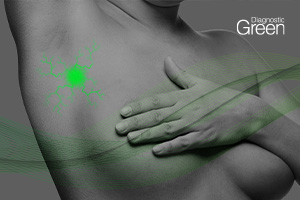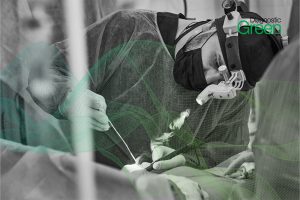Background: Securing sufficient blood perfusion to the anastomotic area after low-anterior resection is a crucial factor in preventing anastomotic leakage (AL). Intra-operative indocyanine green fluorescent imaging (ICG-FI) has been suggested as a tool to assess perfusion. However, knowledge of inter-observer variation among surgeons in the interpretation of ICG-FI is sparse. Our primary objective was to evaluate inter-observer variation among surgeons in the interpretation of bowel blood-perfusion assessed visually by ICG-FI. Our secondary objective was to compare the results both from the visual assessment of ICG and from computer-based quantitative analyses of ICG-FI between patients with and without the development of AL. A multicenter study, including patients undergoing robot-assisted low anterior resection with stapled anastomosis. ICG-FI was evaluated visually by the surgeon intra-operatively. Postoperatively, recorded videos were anonymized and exchanged between centers for inter-observer evaluation. Time to visibility (TTV), time to maximum visibility (TMV), and time to wash-out (TWO) were visually assessed. In addition, the ICG-FI video-recordings were analyzed using validated pixel analysis software to quantify blood perfusion.
Results: Fifty-five patients were included, and five developed clinical AL. Bland-Altman plots (BA plots) demonstrated wide inter-observer variation for visually assessed fluorescence on all parameters (TTV, TMV, and TWO). Comparing leak-group with no-leak group, we found no significant differences for TTV: Hazard Ratio; HR = 0.82 (CI 0.32; 2.08), TMV: HR = 0.62 (CI 0.24; 1.59), or TWO: HR = 1.11 (CI 0.40; 3.11). In the quantitative pixel analysis, a lower slope of the fluorescence time-curve was found in patients with a subsequent leak: median 0.08 (0.07;0.10) compared with non-leak patients: median 0.13 (0.10;0.17) (p = 0.04).
Conclusion: The surgeon’s visual assessment of the ICG-FI demonstrated wide inter-observer variation, there were no differences between patients with and without AL. However, quantitative pixel analysis showed a significant difference between groups.




